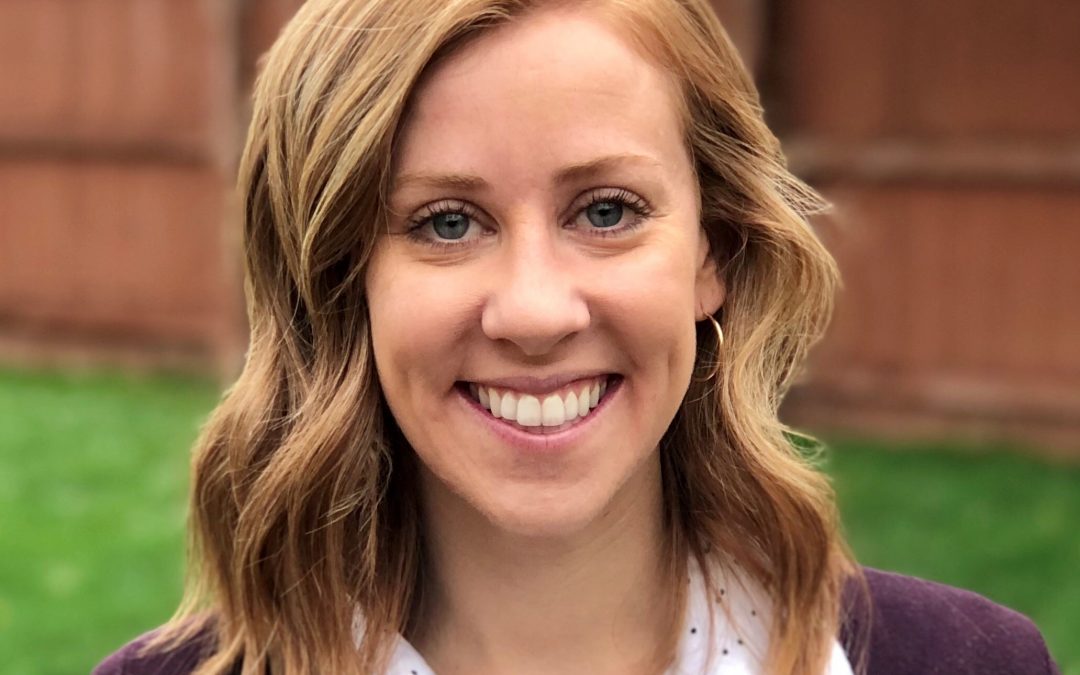Amy Moyer is new to the Water Education Colorado Board of Trustees and is a strong addition, bringing six years of experience at the Colorado Department of Natural Resources where she’s the assistant director for water. Amy’s recent work at DNR has focused on process improvement, specifically pertaining to permitting water supply projects. She helped with the state’s three-day “lean” event in March 2016, where those involved with permitting came together to discuss potential efficiencies in their process. Lean resulted in the Colorado Water Supply Planning and Permitting Handbook, which recommends a process for project proponents looking to permit new water supply projects, complete with hints and best practices. We sat down with Amy to hear more.
As a new member of the board what qualities do you think you bring to the board, and what excites you the most about being able to support WEco in this unique position?
I recently joined the board in September 2018. I fulfill a DNR seat on the board, so I’m looking forward to bringing a statewide perspective on a wide variety of water and natural resource issues. I’m excited to get to work alongside an incredibly knowledgeable board and talented staff to support WEco.
What do you enjoy most about working in the world of water?
My favorite thing about working in water is the underlying public good and necessity of it. It’s a critical resource, and for me, representing the State, there is a need to work collaboratively across all the various sectors that rely on water, from the municipal sector, to the environment, to industry. Having the opportunity to work with many different stakeholders and our division staff is exciting, collaborative and is something that I really enjoy.
Can you tell me about the development of the Water Supply Planning and Permitting Handbook, starting with the lean facilitation method?
The lean process arose out of a recommendation in the Colorado Water Plan focusing on making the permitting process more efficient, and so we brought together a diverse spectrum of stakeholders to have a conversation. In doing so, we wanted to break down the permitting process and find areas of improvement. Therefore, we brought together stakeholders across the federal level, the state level, representatives from local government, representatives from the water provider realm and then some NGO stakeholders who have experience working on the permitting process and who can bring those perspectives to the table.
What was the driving motivation for bringing these various stakeholders together?
We’ve seen some of these projects take over 15 years to get to a permitting decision, and so from a water supply perspective we have decided that there has to be a way to get through this process smarter and get to a decision earlier, while not compromising any of the environmental analysis needed to review these projects. That was the impetus of bringing together these stakeholders to have this conversation, in hopes of examining the permitting process and figuring out areas where we can make it more efficient, while still maintaining the robust analysis to understand the impacts of these projects.
When was the handbook officially released, and what were some of the difficulties that stemmed from its initial enactment?
We officially released the handbook in October of 2017, so it is still a relatively new document, but the tough part with any sort of lean facilitation process is you would hope to have a pilot project ready to go to see if you have made any difference. The difficulty with water projects is that they are very technical, have unique impacts, and ultimately they don’t happen every year. As a result, we don’t have a project that we can immediately use as a test case to see the concrete results of how or whether these ideas improve the process as a whole.
How has the handbook been received to date?
I think to this point we’ve gotten really great feedback as to the tips in the handbook and how vital they would be to future water providers entering the permitting process. I think those who have gone through the process and have read it and said that “yes, these are the areas we would have done differently.” Some of the areas we are heavily focusing on now with projects in the permitting process, pertaining specifically to the state level, is how we align the different state processes to make those as efficient and collaborative as possible.
Where do you see the handbook developing in the future?
There were certainly areas that we didn’t have the capacity to delve into in the first release of this handbook that I think there may be future interest to dive into and explore more. I think one of the areas that we are interested in seeing the alignment is the guidance coming down from the federal level through the One Federal Decision process. The key question is how we continue to align the recommendations in the handbook for early-and-often stakeholder engagement with some of the stricter time limits coming down from the federal level.
This Q&A was first published in the summer 2019 issue of Headwaters magazine focused on permitting water supply projects. Find the issue here.
Read interviews with other WEco board members:
A conversation with Greg Hobbs on water equity, March 2020
A conversation with Chris Treese on demand management in the arid West, November 2019
A conversation with Amy Moyer on the “lean” facilitation process, June 2019
Countering climate change, Q&A with Jorge Figueroa, March 2019
A WISE approach to water reuse, Q&A with Lisa Darling, October 2018
River and stream planning, Q&A with Dan Luecke, June 2018
SWCD: The weight of water on public land, Q&A with Laura Spann, March 2018


 Print
Print